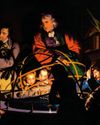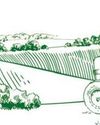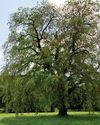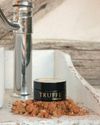
THE Panama hat is the symbol of elegant British summer living, synonymous with Pimm’s and strawberries, blades feathering, the rattle of batting collapses and the ripple of sympathetic applause at Wimbledon as a plucky British player bows out in the early rounds. Sported by the art historian abroad and the detective on a Nile cruise, it is also the hat a man wears when day-dreaming of driving an open-topped roadster along the Corniche with Grace Kelly in the passenger seat. Although the trilby suggests pipe tobacco and fly-fishing in the autumn rain, the Panama carries the whiff of Cuban cigars, white smoke rising before a silhouette of ancient ruins against a dimming orange sun. It is both practical and fantastical. It has panache. It also has the wrong name.
‘The first thing to know about Panama hats is that they don’t come from Panama,’ explains hat maker Mavi Tzaig. Who knew that the name of Britain’s most popular summer headgear is a geographical misnomer? Just as French horns and Capri pants originated in Germany, so the Panama, in reality, comes from Ecuador.
Mrs Tzaig, along with her Ecuadorean mother, Jenny Frohlich, runs The Panama Hat Company, the UK’s largest importer and maker of Panama hats. ‘When the Conquistadors arrived in Ecuador, the indigenous people wore hats made from the fibres of a palmlike plant (Carludovica palmata),’ Mrs Tzaig continues. ‘The hats were brimless and looked like the tocado that were then fashionable among Spanish nobility, so the Spaniards called the plant paja toquilla (hat straw).’
Diese Geschichte stammt aus der June 21, 2023-Ausgabe von Country Life UK.
Starten Sie Ihre 7-tägige kostenlose Testversion von Magzter GOLD, um auf Tausende kuratierte Premium-Storys sowie über 8.000 Zeitschriften und Zeitungen zuzugreifen.
Bereits Abonnent ? Anmelden
Diese Geschichte stammt aus der June 21, 2023-Ausgabe von Country Life UK.
Starten Sie Ihre 7-tägige kostenlose Testversion von Magzter GOLD, um auf Tausende kuratierte Premium-Storys sowie über 8.000 Zeitschriften und Zeitungen zuzugreifen.
Bereits Abonnent? Anmelden

A leap in the dark
The primal play of light and shadow, whether in Leonardo's ever-so-subtle sfumato or Caravaggio's dramatic contrasts, has shaped Western art, as Michael Hall reveals

Beauty and the blimp
Inflammable airships may be gone, but a new hybrid aircraft, capable of delivering eco-friendly aviation, is set to take to the skies with a bang, finds Charles Harris

Three wishes for food and farming
Royal hedge planting, the terrible toll on Ukrainian farming and a maiden speech

Seeing the wood for the trees
Scotland's much-evolved forestry industry has become a focus for clever investors

Let's fall in love
Birds do it, bees do it, even educated fleas do it. Laura Parker finds that, when it comes to creatures mating for life, persistence, patience and a little dad dancing are key to success

Back from the dead
THREE Wentworth elm saplings have been planted in the grounds of the Palace of Holyroodhouse, Edinburgh, and on the Highgrove estate in Gloucestershire-29 years after what was thought to be the lastknown Wentworth elm died.

A man among men
What makes a master? Beloved of the commercial art world, handled warily by art historians, the word has long been opaque. Michael Prodger investigates its many meanings-and discovers that being male confers an unfair advantage

Unearth one of life's luxuries
Black diamonds are a girl's best friend this Valentine's Day, with Périgord truffle-based skincare from TRUFFE

Adventure awaits
Spend an unforgettable family holiday on the Benmore Estate and experience some of Scotland's finest wildlife and sporting activities

Let the art rule the head
Despite being a world leader in everything from jewellery to fashion and music, the UK is failing to nurture creativity at school and in regional centres. Tristram Hunt, director of the V&A Museum, calls for an urgent review